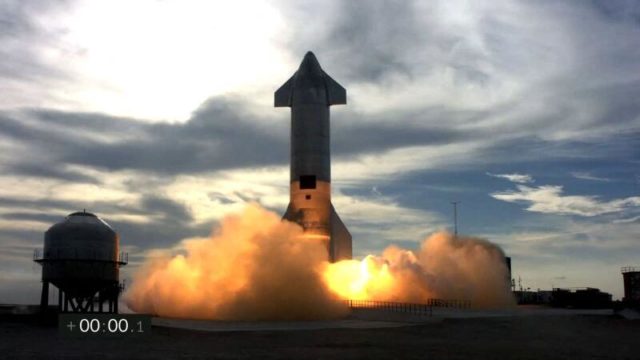When Nasa decided to outsource human spaceflight missions to the space station years ago, it hoped that the missions would one day allow ordinary people to fly to space
ONE DAY, Elon Musk has said, he would like human spaceflight to be as routine as commercial airline travel, with regular flights through the atmosphere ferrying astronauts around the solar system.
That day is not here yet – not even close.
But after Sunday’s flawless return of four astronauts to a splashdown in the Gulf of Mexico, the company has made space travel look easy, at least for one flight, and even had some fun with it.
After NASA Crew-1 astronauts Michael Hopkins, Shannon Walker and Victor Glover along with Japan’s Soichi Noguchi splashed down in the Gulf of Mexico, in a pinpoint landing at 2:56 a.m, just south of Panama City, SpaceX’s ground controller said: “We welcome you back to planet Earth. For those of you enrolled in our frequent-flier program, you’ve earned 68 million miles on this voyage.”
To which Hopkins replied: “We’ll take those miles. Are they transferrable?”
Not yet.
But SpaceX will take a significant step forward in human spaceflight with its next mission – flying what would be the first all-civilian crew in a flight scheduled for September that would orbit Earth for a few days. Called Inspiration4, the flight is being funded by billionaire entrepreneur Jared Isaacman, an accomplished jet pilot but not a professional astronaut.
Nor are the other members of the crew: Haley Arceneaux, a physician assistant; Sion Proctor, a teacher and communicator; and Chris Sembroski, an engineer at Lockheed Martin. Isaacman set up the mission as a fundraiser for St. Jude Children’s Research Hospital, and held what amounted to a sweepstakes competition for two of the seats.
When NASA decided to outsource human spaceflight missions to the space station years ago under its “commercial crew” program, it had hoped that the missions would become successful enough that ordinary people would one day be able to fly.
“This was really our goal when we set up commercial crew,” Kathy Lueders, the head of NASA’s human spaceflight directorate, said in a briefing early Sunday. “Honestly, we’re very excited to see it kind of taking off.”
Hans Koenigsmann, SpaceX senior adviser for flight reliability, said Sunday’s splashdown gives the company confidence that it could fly civilians with some regularity.
“I think going forward we’re ready for this important step,” he said. “We’re ready for the first private astronaut mission. I think the first mission in particular is a very special mission.”
But it’s not the only one on the books.
SpaceX is planning another flight of NASA astronauts that would include Raja Chari and Tom Mashburn as well as Matthias Maurer of Germany in October. Then, in January, it would keep the pace going with another launch of civilians, in a mission that this time would go to the space station.
The flight is being organised by Axiom Space, a Houston-based company that is working to build a commercial space station. It is being led by Axiom vice president Michael Lopez-Alegria, a former NASA astronaut. Joining him on the mission to spend about a week on the space station are a trio of billionaires who are paying $55 million each for the trip.
Despite the successful splashdown Sunday, NASA and SpaceX can’t get complacent or ahead of themselves, Lueders said. Spaceflight may get romanticized in popular culture, but in reality it remains a dangerous and risky endeavour that requires an enormous amount of work and diligence.
Sunday’s touchdown was the completion of SpaceX’s first full-duration mission. And while it has now flown two sets of astronauts to the space station, and returned them safely, it has a lot to prove.
“We’re still at the beginning steps of continuing to make this look easy,” she said. “But this is only our first full operational mission. So we need to keep having missions look like this … But it is very exciting that we’re starting to lay in the foundations for these key capabilities.”
SpaceX recently won a $2.9 billion contract from NASA to develop the spacecraft that would ferry astronauts to the surface of the moon – an award that is being challenged by the losing bidders, Jeff Bezos’ Blue Origin and Dynetics, a defense contractor. (Bezos owns The Washington Post.)
But before it looks ahead to that, SpaceX was content on Sunday to revel in the successful splashdown.
The capsule undocked from the space state at 8:35 p.m. Saturday, then completed a series of milestones that officials said were picture-perfect, from firing its engines to plunge the spacecraft into the atmosphere, to jettisoning its trunk to expose the heat shield, which protected the astronauts against temperatures that reached 3,500 degrees Fahrenheit.
Smaller drogue parachutes deployed to slow and stabilize the vehicle as it fell through the atmosphere, and the four massive main chutes unfurled before the soft touchdown.
SpaceX got the Dragon spacecraft out of the water and onto the deck of the recovery ship in less than 30 minutes. The crew exited the vehicle less than an hour after splashing down in what NASA and SpaceX called a flawless flight.
“It looked more like a racecar pit stop than anything else,” Koenigsmann said. “Everybody was at the right spot and did the right thing. And then, obviously, the weather was great.”








